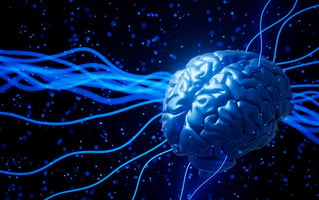Researchers Identify Neurons That Regulate Opioid Analgesia Independent of Euphoria

Researchers have identified and characterized a set of neurons that specifically regulate the pain-relieving effects of opioids and not their euphoric effects, according to a study published today in Science.
“[C]linical management of chronic pain remains a staggering challenge, and opioids remain essential analgesic options,” wrote Michael P. Fatt, Ph.D., of Sweden’s Karolinska Institutet, and colleagues. “However, the reliance on opioid analgesics has contributed to the opioid epidemic. Alternative therapeutic strategies that provide pain relief across different pain conditions are urgently needed.”
Fatt and colleagues employed multiple neuroscience and computational techniques to track and manipulate neuronal activity in mice that had received shots of morphine. The researchers found that pain relief could be controlled by an ensemble of neurons located in a region of the brainstem called the rostral ventromedial medulla (RVM). After being activated by morphine, these RVM neurons communicate with other neurons in the spinal cord and tell them to inhibit incoming pain signals.
The pain inhibition was mediated by a molecule known as brain-derived neurotrophic factor (BDNF). When researchers blocked BDNF activity in the RVM neurons, morphine produced no analgesic effects in mice; however, when they boosted BDNF expression, morphine could relieve pain at low doses that normally have no effect.
“Has the neural substrate for morphine analgesia now been identified? It may be more accurate to say that one neuronal population that can contribute to opioid analgesia has been molecularly characterized,” Caitlynn De Preter, B.S., and Mary M. Heinricher, Ph.D., of Oregon Health and Sciences University, wrote in an accompanying perspective article. They noted that research studies have identified other sites in the brain associated with opioid analgesia.
“However, acknowledging that other circuit elements likely contribute to opioid analgesia does not detract from the findings of Fatt et al.,” De Preter and Heinricher continued. These results and follow-up research will “provide the tools for targeting specific neural circuits to achieve effective pain relief with fewer side effects, potentially identifying targets for nonopioid pain management and the treatment of chronic pain conditions.”
For related information, see the Psychiatric News article “Integrated Behavioral Approaches Show Promise in Treating Pain.”
(Image: Getty Images/iStock/BlackJack3D)
Don't miss out! To learn about newly posted articles in Psychiatric News, please sign up here.





